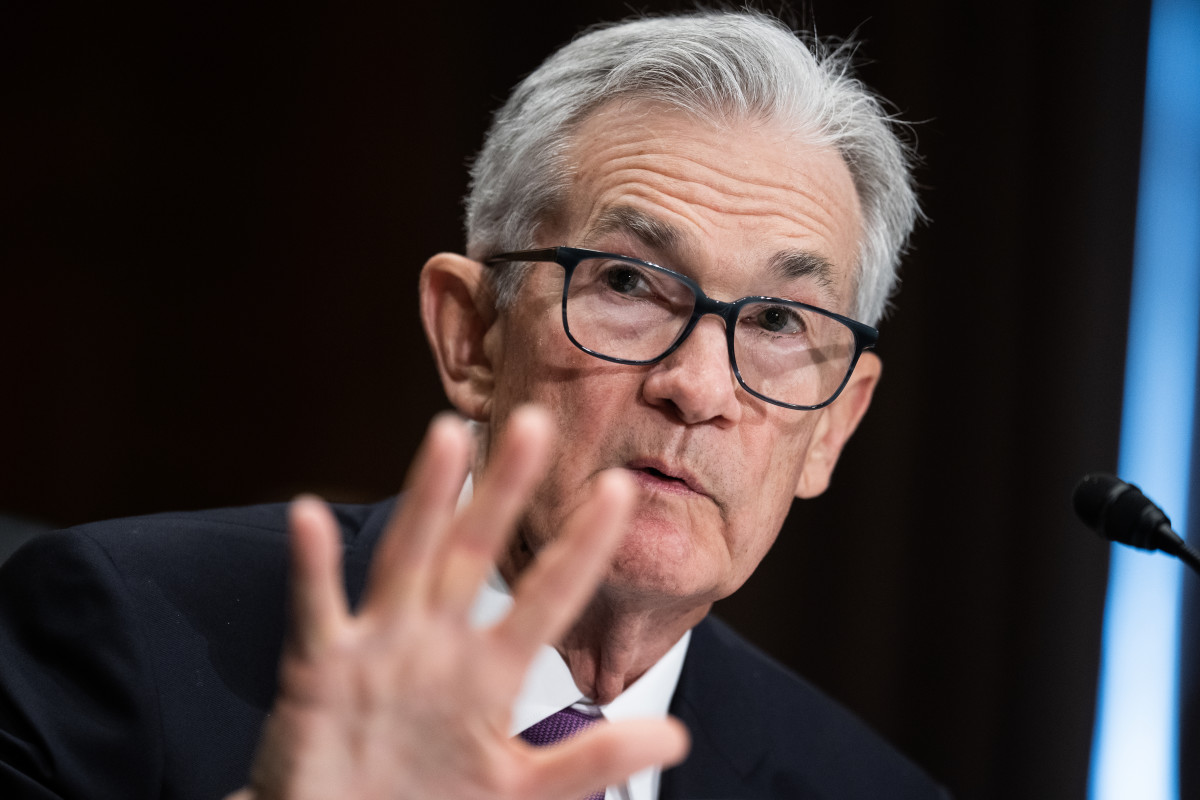
As the last week unfolded, two worries were creeping into markets.
- The Federal Reserve would not change rates at its meeting, even as the economy was showing signs of fading.
- The fade would start to get worrisome.
When the week ended, both fears were realized. The Fed left its key rate unchanged at 5.25% to 5.5% but hinted a rate cut was coming. In September.
Related: Jobs report cements case for bigger Fed interest rate cut
Then, economic reports Thursday and Friday — on manufacturing and the all-important monthly jobs report — were, well, crummy.
Perhaps as shocking, chip maker Intel (INTC) , a revered U.S. technology pioneer, reported weak earnings and weaker guidance. The shares fell 25% in A DAY and are off more than 50% this year.
Amazon.com (AMZN) shares dropped nearly 9% on an earnings miss and weak guidance about its retail business. (Its Amazon Web Services business is fine.)
So, stocks plunged on Thursday and on Friday. The S&P 500 ended the week down 2.9%. The Nasdaq Composite dropped 5.4%. Both are dominated by tech stocks. The Dow Jones industrials were off 1.4%.
Many analysts said Fed Chairman Jerome Powell and his colleagues had erred leaving rates alone.
The market malaise continued into Monday. Trading in stock futures trading late Sunday and early Monday suggested U.S. stocks will open sharply lower. Japan's Nikkei index was off more than 12%, and stocks across Asia and Europe were lower as well.
There was some good news — thanks to all the bad news.
Oil prices fell more than 4% with crude at $73.5 a barrel, down 4.7% on the week. Gasoline prices fell as well.
And interest rates fell. Mortgage rates dropped below 6.5% for the first time since May 2023.
The fade to a possible September interest-rate cut (maybe 0.25%, possibly 0.5%) will challenge markets in the week ahead. Plus, August is one of the year's weakest months. Here's how to look at it.
Is the fade a precursor to recession?
Market bears have been saying for months the stock market was in a bubble. Now it's burst and crashing. So, deal with it and a recession.
Related: Jobs report triggers key recession warning signal as stocks plunge
A second argument: Post-pandemic inflation has squeezed consumers badly. You can see the squeeze in growing job losses and rising numbers of restaurants, bars and the like failing. The bubble-burst is exposing economic weakness
Others are cheerfully bullish and regard the current selling as setting up a big buying opportunity. Ed Yardeni of Yardeni Research doesn't think the jobs report was that bad.
The July jobs report was distorted by Hurricane Beryl, he argues, which barreled into Texas near Houston, cutting power to thousands for days, just as Labor Department researchers were gathering data.
(Tropical Storm Debby is forming in the Gulf of Mexico and may hit Florida's northern Gulf Coast.)
Related: Analysts reset Generac stock price target as hurricane season ramps
The search for the turn
The quest now is finding a market bottom.
A useful indicator is if an index or stock has fallen under its 50-day moving average. A price above the 50-day average is a basic signal of investor confidence. Below 50 is not, but it can and will lead to a healthier market. That is, if the stocks are solid.
The S&P 500 and Nasdaq are slightly below their 50-day averages. The 50-day average for Nvidia (NVDA) is nearly 11% below its 50-day average.
The Nasdaq and Nasdaq-100 indexes now are in corrections, down 10.2% and 10.9% from their July peaks.
The S&P 500, meanwhile, is off 5.7% from its July peak. The Dow is off just 3.6%.
None of the major indexes are down 20%, bear-market levels. But Nvidia's shares are down 23% from their June 20 peak.
More on markets and investing:
- Jobs report triggers key recession warning signal as stocks plunge
- Rome Is Burning: It's Time to Recognize the U.S. Economy's Weakness
- Amazon CEO warns of trend that’s making consumers flee pharmacies

RSI may be signaling more pain ahead
A relative strength index measures the speed of price changes over time. When a stock or index is falling, a reading of 30 or lower suggests a bottom is near. At 20 or lower, the bottom is at hand.
When the market bottomed in October 2023, the RSIs for the S&P 500 and Dow were both under 30. Suddenly, after Oct. 27, buyers emerged.
The RSIs for the Nasdaq, Nasdaq-100 and S&P 500 are now in the mid-30s.
The Fed, however, will be the determinator.
(In June and July, when investors were in an artificial-intelligence frenzy, the RSIs for the S&P 500, Nasdaq and even the Dow jumped above 70, an overbought warning. Then, they topped 80 — a signal a selloff was imminent. It was. Nvidia's RSI topped 81 on June 18.)
The economy will still matter
The big economic news will come from the ISM Non-Manufacturing report due Monday. The ISM Manufacturing report last week showed the factory sector of the economy shrinking.
On Wednesday and Thursday are mortgage indicators from the Mortgage Bankers Association and, then, Freddie Mac's weekly survey on U.S. mortgage rates.
Earnings season rolls on
There is another bucket of earnings report coming. Commanding interest will be:
- Data-analytics company Palantir Technologies (PLTR) , reporting after Monday's close. The estimate is 4 cents a share, up from 3 cents a year ago.
- Biotech giant Amgen (AMGN) and construction-equipment giant Caterpillar (CAT) are due Tuesday. Amgen's estimate of $4.92 is down from $5 a year ago. Caterpillar is expected to earn $5.53, down from $5.55.
- Entertainment giant Walt Disney (DIS) , due after Wednesday's close. The estimate is $1.20 a share, up from $1.03.
So far the earnings season has been mixed, according to FactSet, the data tracking company. But not enough to generate serious worries.
Related: Veteran fund manager sees world of pain coming for stocks







